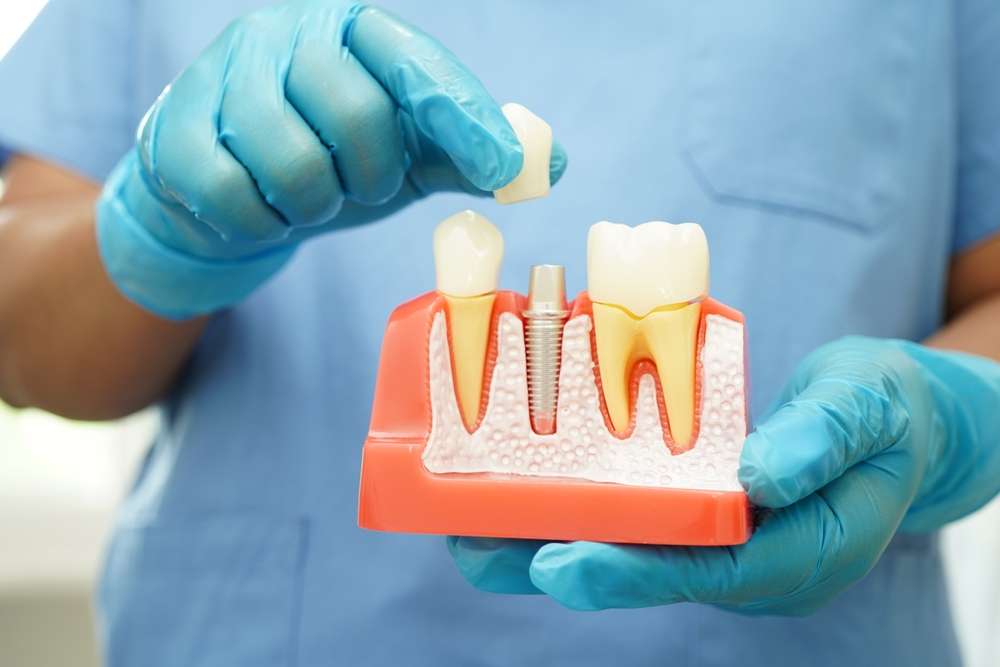Discover the Future of Dental Implants: Screwless Solutions in Australia
The dental implant industry in Australia is undergoing a revolutionary transformation with the introduction of screwless dental implants. These advanced systems offer patients a more comfortable and efficient alternative to traditional screw-retained implants. By eliminating many complications associated with conventional designs, screwless implants provide the same long-lasting, functional, and aesthetic results while simplifying the treatment process.

Discover the Future of Dental Implants: Screwless Solutions in Australia
The landscape of dental restoration continues to advance with revolutionary technologies that challenge traditional approaches. Screwless dental implants represent a significant leap forward in implant dentistry, offering patients in Australia access to sophisticated treatment options that prioritize comfort, efficiency, and long-term success. Understanding these innovative solutions can help individuals make informed decisions about their oral health restoration needs.
What Are Screwless Dental Implants?
Screwless dental implants utilize alternative attachment mechanisms that eliminate the need for traditional screw-retained components. These systems typically employ friction-fit connections, cement retention, or specialized locking mechanisms to secure the prosthetic crown to the implant fixture. The technology focuses on creating stable connections through precise engineering and advanced materials, ensuring reliable attachment without conventional threading systems.
These implants maintain the same fundamental principle as traditional implants—osseointegration with the jawbone—while offering different approaches to crown attachment. The absence of screws can reduce mechanical complications and provide smoother restoration surfaces.
How Does the Screwless Implant Procedure Work?
The screwless implant procedure follows similar initial steps to conventional implant placement, beginning with comprehensive examination and treatment planning. The implant fixture is surgically placed into the prepared jawbone site, where it integrates over several months through natural healing processes.
Once osseointegration is complete, the restoration phase differs significantly from traditional methods. Instead of screw-retained crowns, screwless systems utilize precision-fit components that lock into place through mechanical retention or cement bonding. This approach often requires fewer components and can streamline the restoration process.
The procedure typically involves taking precise impressions, fabricating custom restorations, and securing them using the specific retention mechanism designed for the chosen system. Many patients find this approach more comfortable during restoration placement.
What Are the Benefits of Screwless Implant Technology?
Screwless implant systems offer several advantages over traditional screw-retained restorations. The elimination of access holes in the crown surface allows for better aesthetics, particularly in visible areas where screw holes might compromise the natural appearance of the restoration.
Maintenance can be simplified with screwless systems, as there are fewer mechanical components that might require adjustment or replacement over time. The sealed restoration surface also reduces the risk of bacterial infiltration through screw access holes, potentially improving long-term hygiene maintenance.
Additionally, these systems often provide more natural emergence profiles and can accommodate challenging anatomical situations where screw access might be problematic. The streamlined design can also reduce chair time during restoration procedures.
Who Is a Good Candidate for Screwless Implants?
Ideal candidates for screwless implants include individuals with adequate bone density and healthy gums who require single tooth or multiple tooth replacement. Patients who prioritize aesthetics, particularly in the front teeth area, may benefit significantly from the seamless crown surfaces these systems provide.
Candidates should have realistic expectations about the treatment process and be committed to maintaining proper oral hygiene. Those with a history of mechanical complications with traditional implants might find screwless alternatives beneficial.
Patients with specific anatomical challenges, such as limited interocclusal space or unfavorable implant angulation for screw access, may be excellent candidates for these innovative systems. A thorough evaluation by a qualified implant specialist is essential to determine suitability.
How Much Do Screwless Dental Implants Cost in Australia?
The cost of screwless dental implants in Australia varies based on several factors including location, practitioner experience, and specific system requirements. Understanding the investment involved helps patients plan for their treatment appropriately.
| Provider Type | Treatment Component | Cost Estimation (AUD) |
|---|---|---|
| Private Practice | Single Screwless Implant | $4,500 - $7,000 |
| Specialist Clinic | Complete Treatment (Surgery + Crown) | $5,500 - $8,500 |
| University Clinic | Full Procedure | $3,500 - $5,500 |
| Premium Practice | Advanced Screwless System | $6,000 - $9,000 |
Factors influencing cost include the complexity of the case, need for additional procedures such as bone grafting, choice of crown materials, and geographic location within Australia. Metropolitan areas typically have higher fees compared to regional centers.
Many practitioners offer payment plans or financing options to make treatment more accessible. Some private health insurance policies provide partial coverage for implant procedures, though coverage varies significantly between providers.
Prices, rates, or cost estimates mentioned in this article are based on the latest available information but may change over time. Independent research is advised before making financial decisions.
Considerations for Treatment Success
Successful outcomes with screwless implants depend on proper case selection, precise surgical technique, and appropriate restoration design. Patients should choose experienced practitioners who have specific training with these systems to ensure optimal results.
Long-term maintenance involves regular dental check-ups, professional cleanings, and diligent home care. While screwless systems may reduce certain maintenance requirements, they still require the same commitment to oral hygiene as traditional implants.
The technology continues to evolve, with ongoing research and development improving materials, techniques, and applications. Patients considering this treatment should discuss the latest options available and their specific benefits with qualified dental professionals.
Screwless dental implant technology represents an exciting advancement in restorative dentistry, offering Australian patients innovative solutions for tooth replacement. By understanding the procedures, benefits, and considerations involved, individuals can make informed decisions about incorporating these modern techniques into their oral health treatment plans.
This article is for informational purposes only and should not be considered medical advice. Please consult a qualified healthcare professional for personalized guidance and treatment.




